Egress vs Ingress: A Guide to Data Traffic Management
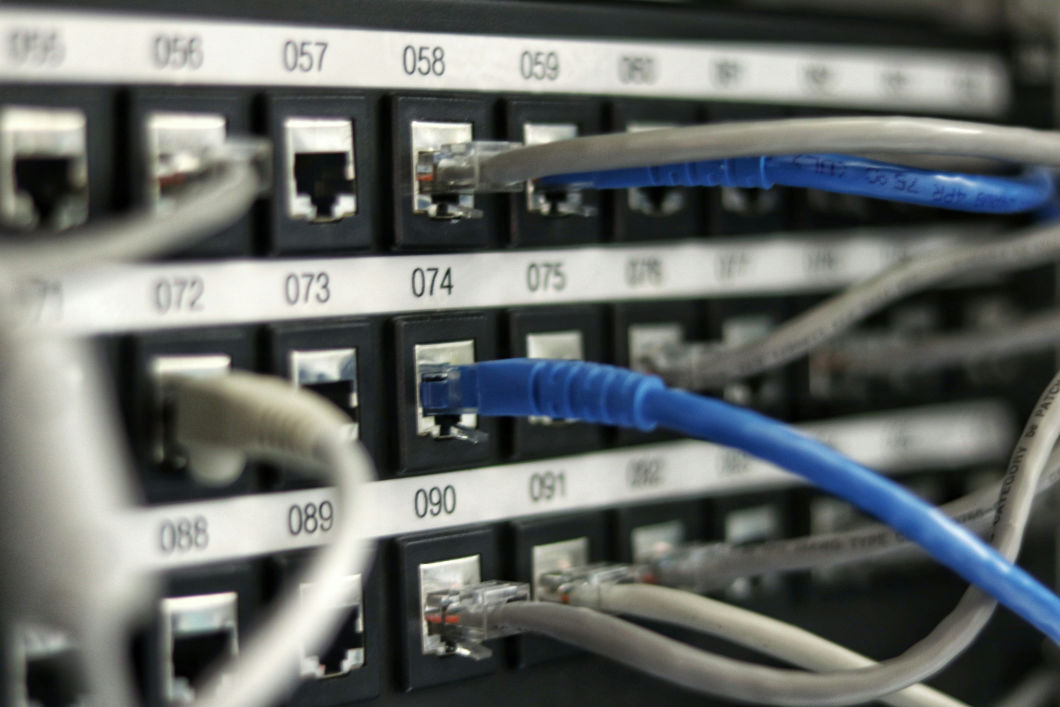
Introduction to Data Egress and Data Ingress
In networking and data management, understanding data flow into and out of a network is crucial for maintaining system security, optimizing performance, and managing costs. The terms "data egress" and "data ingress" frequently arise in discussions about data transmission, particularly when dealing with cloud environments and distributed systems. This guide aims to demystify these terms by breaking down their meanings, implications, and relevance in various technological contexts.
What Is Data Egress?
Data egress refers to data flow exiting a particular network or computing environment. This can involve data transfer from a local network to the internet, from one data center to another, or from a cloud environment to a user's local environment. Egress is significant for several reasons, including cost management, data security, and compliance with data protection regulations.
For instance, in cloud computing, data egress can incur costs, as many cloud service providers charge for the data that leaves their cloud networks to the internet or other external destinations. These charges can vary based on the volume of data, the destination, and the specific cloud provider's pricing model. Therefore, understanding and monitoring data egress is vital for managing operational expenses in cloud architectures.
Moreover, data egress also poses security risks. Unauthorized data egress can be a sign of data exfiltration by malicious actors. Organizations must employ adequate security measures such as data loss prevention (DLP) strategies, encryption, and rigorous access controls to safeguard sensitive information from unauthorized access or leaks.
What Is Data Ingress?
Contrary to data egress, data ingress involves data movement into a network. This could be data from the internet to a local network, external storage into a cloud service, or peripheral devices into a system. Ingress is primarily concerned with introducing data into a specific environment, which is crucial for applications that depend on real-time data feeds, such as analytics platforms, monitoring systems, and interactive applications.
Regarding security and management, data ingress requires different considerations than data egress. For instance, ensuring the integrity and security of incoming data is a significant concern. This includes verifying that the data is not corrupted, ensuring it is from a trusted source, and scanning it for malware or other security threats. Furthermore, in scenarios where large volumes of data are ingested regularly, such as in big data applications, managing the bandwidth and ensuring the network's performance becomes critical.
Understanding Egress vs Ingress
Differentiating Egress Traffic from Ingress Traffic
Understanding the difference between egress and ingress traffic is essential for effective network management and security. Egress traffic refers to data leaving a network, such as sending an email from a company's server to a client's email server or uploading data from a local storage to a cloud service. Conversely, ingress traffic involves data entering a network, like receiving emails from outside the company or downloading data from the internet to a local server.
The primary differentiation lies in the direction of the data flow and the security protocols required to manage these directions effectively. For instance, egress traffic monitoring focuses on preventing data leaks and ensuring data does not exit the network without proper authorization. On the other hand, ingress traffic monitoring aims to protect the network from external threats, such as malware or unauthorized access attempts.
Role of Ingress Work in Network Communication
Ingress plays a pivotal role in network communication, serving as the gateway through which all external data enters a network. Managing ingress effectively is crucial for maintaining system performance and reliability in complex network architectures, particularly those involving cloud computing. This includes deploying appropriate firewall policies, intrusion detection systems (IDS), and secure authentication methods to ensure that only legitimate and authorized data is allowed entry.
Moreover, the role of ingress is also significant in content delivery networks (CDNs), where data from origin servers is ingested to edge servers closer to the end-users. This reduces latency and improves data delivery speed, enhancing user experience and system efficiency.
Importance of Understanding Egress vs Ingress
Grasping the nuances of egress versus ingress is vital for several reasons. First, it aids in the accurate configuration of network security measures. Knowing which data should enter or leave a network helps set up precise security controls and prevents potential data breaches. Additionally, understanding these concepts helps in optimizing network performance. Efficient data flow management ensures adequate bandwidth allocation, enhances system responsiveness, and prevents network congestion.
Furthermore, understanding egress and ingress can lead to cost savings from a financial perspective, particularly in cloud environments. Many cloud providers charge differently for egress and ingress traffic, so knowing how data flows can help forecast expenses and choose the right service model.

Significance of Egress in Data Transmission
Egress in data transmission holds critical importance in the architecture and operation of network systems, especially as businesses increasingly rely on cloud services and distributed networks. Egress refers to data movement out of a particular network or computing environment. This includes sending data from a private intranet to the public internet, from one data center to another, or from on-premises servers to a cloud-based storage or application. Understanding the significance of egress helps organizations in several key areas: cost management, security, performance optimization, and regulatory compliance.
Cost Management
One of the most tangible impacts of data egress is on cost. Many cloud providers implement pricing models that charge for egress traffic, i.e., data that exits their network to another network or the internet. These costs can vary significantly depending on the volume of data transferred, the destination of the data, and the specific pricing terms set by the managed cloud provider. Businesses must be mindful of these costs, as they can accumulate quickly, particularly when large datasets are moved frequently across different networks. Effective management and monitoring of data egress can lead to substantial cost savings and more predictable budgeting for IT expenditures.
Security Implications
From a security perspective, controlling and monitoring data egress is crucial for protecting sensitive information and intellectual property. Unauthorized data egress can signify a security breach, such as data exfiltration by cyber attackers who have penetrated network defenses. Organizations employ various security mechanisms like firewalls, egress filters, and intrusion detection systems that specifically monitor and control outgoing traffic to combat this. Strong egress security policies ensure that only authorized data leaves the network and that any suspicious data flow is promptly identified and mitigated.
Performance Optimization
Egress traffic can also impact a network's performance. High volumes of outgoing data can consume substantial bandwidth, potentially leading to congestion and reduced network performance. Organizations must optimize their egress traffic to ensure critical applications and services have the bandwidth to function effectively. Techniques such as traffic shaping, prioritization of network traffic, and using dedicated egress nodes can help manage the load and improve the network's overall performance.
Compliance and Regulatory Requirements
For many industries, managing data egress is not just a matter of security or cost but also of legal compliance. Regulations such as the General Data Protection Regulation (GDPR) in the European Union and the California Consumer Privacy Act (CCPA) in the United States impose strict guidelines on how data is handled and transferred across borders. Organizations must ensure that their data egress practices comply with these laws to avoid fines and legal issues. This includes implementing data protection measures and maintaining detailed logs of data movement to demonstrate compliance during audits.
Egress and Ingress in Data Traffic Management
Effective management of both egress and ingress traffic is crucial for maintaining optimal performance and security in network systems. As organizations increasingly adopt cloud-based services, distributed architectures, and global networks, the need to precisely manage data flow into and out of their systems becomes paramount. This section explores how egress and ingress are managed to optimize data traffic, reduce risks, and ensure efficient network operation.
Traffic Analysis for Network Optimization
Traffic analysis plays a vital role in optimizing network performance by providing insights into the behavior of data as it enters and exits a network. By analyzing ingress and egress traffic, IT teams can make informed decisions to improve data handling, allocate resources more efficiently, and enhance overall network performance.
Key Aspects of Traffic Analysis:
- Volume Analysis: Monitoring the amount of data moving in and out of the network helps identify peak usage times and potential bottlenecks. This information is crucial for capacity planning and for designing networks that can handle expected loads without degradation in performance.
- Type of Traffic: Understanding what types of data are being transmitted (e.g., video, audio, bulk data transfers) allows network managers to prioritize traffic and apply quality of service (QoS) rules to ensure critical applications receive the required bandwidth.
- Traffic Sources and Destinations: Identifying the sources of ingress traffic and the destinations of egress traffic provides insights into the network's usage patterns. This can help enhance security measures by spotting unusual routes that may indicate a security threat.
- Performance Metrics: Analyzing traffic performance metrics such as latency, packet loss, and jitter is essential for maintaining the quality of service. High latency or packet loss in ingress traffic can severely impact applications that depend on real-time data, while similar issues in egress traffic can affect how external systems and clients interact with the network.
- Security Threats: Traffic analysis is not just about optimization but also security. By monitoring ingress and egress patterns, anomalies that may signify cyber threats, such as DDoS attacks or data exfiltration attempts, can be detected early.
Risks Facing Egress and Ingress
Organizations increasingly rely on complex network infrastructures, including multi-cloud environments and hybrid systems, so managing data egress and ingress becomes a critical security and operational concern. Egress and ingress traffic can expose a network to various risks, impacting everything from performance to compliance. Understanding these risks is crucial for implementing effective protective measures and maintaining robust network security.
Risks Facing Egress
Data Exfiltration
Data exfiltration involves the unauthorized transfer of data from within a network to an external location. This can occur through various means, such as compromised accounts, malicious insiders, or malware. Egress traffic is a primary vector for such activities, as attackers often seek to move stolen data to a control server or other destinations outside the victim's environment. Monitoring and controlling egress traffic is essential to detect and prevent data exfiltration, especially for sensitive or regulated information.
Malware Proliferation
While malware typically infiltrates a network via ingress traffic, egress traffic plays a critical role in the proliferation of malware, particularly in the context of command and control (C&C) communication and spreading malware to other systems. Once a network is compromised, malware can use egress paths to send sensitive data to attackers, receive updates or commands, and propagate to other networks. Blocking unwanted egress connections is vital in stopping malware from communicating with external servers and executing malicious activities.
Compliance Violations
Organizations must adhere to numerous regulations that dictate how data should be handled and protected, including rules about how data can be transferred and who can access it. Unauthorized data egress can lead to compliance violations, resulting in significant fines and damage to an organization’s reputation. This is particularly pertinent in industries governed by strict data protection regulations like healthcare, banking, and services that handle the personal data of EU citizens under GDPR.
Bandwidth Abuse
Egress traffic can consume substantial network bandwidth, particularly if not properly managed. Activities such as large data transfers, streaming video content from the network, or the unauthorized use of business resources for personal use (like torrent downloads) can significantly affect network performance and availability for critical operations. Monitoring egress traffic helps identify and manage non-essential use of network resources, ensuring bandwidth is prioritized for business-critical applications and services.
Insider Threats
Insider threats are a significant security risk, particularly in terms of egress traffic. Employees or contractors with malicious intent or those who are manipulated by external parties can misuse their access to sensitive information, leading to unauthorized data transfers. Monitoring and controlling egress points are essential to detect and mitigate activities that could lead to intellectual property theft or the leaking of confidential company information.
Risks Facing Ingress
Cyber Attacks
Ingress traffic can be a conduit for various cyber attacks, where malicious entities attempt to exploit vulnerabilities in a network’s defenses. Common types include distributed denial-of-service (DDoS) attacks, where massive volumes of data are sent to a network to overwhelm it and cause a shutdown. Other cyber attacks may involve exploiting software vulnerabilities with the intent to inject malware or ransomware into the system. Effective firewall policies, intrusion detection systems, and regular security audits are crucial to mitigate the risks associated with malicious ingress traffic.
Unauthorized Access
Unauthorized access through ingress points can lead to significant security breaches. Attackers often seek to exploit weak authentication processes or unsecured network ports to gain entry into a system. Once inside, they can access sensitive data, alter system functionalities, or gain administrative privileges. Implementing strong authentication methods, comprehensive encryption practices, and continuously monitoring ingress traffic are essential strategies to prevent unauthorized access.
Data Corruption
Ingress traffic can introduce corrupted data into a system, either accidentally through data transfer errors or maliciously through targeted attacks. Corrupted data can compromise the integrity of existing systems and databases, leading to incorrect data analysis, malfunctioning applications, and ultimately, operational failures. To safeguard against data corruption, it is essential to implement data validation protocols and error-checking mechanisms to ensure that incoming data is accurate, complete, and unaltered.
Service Disruption
Service disruption can occur when the normal flow of ingress traffic is interrupted or when the network is flooded with excessive data, intentionally or unintentionally. This can result in degraded service performance or total service unavailability. Network traffic should be monitored and controlled to manage these risks, and bandwidth management strategies should be employed to ensure that critical services receive the necessary resources to function effectively.
Phishing and Social Engineering
Phishing and social engineering attacks often begin with ingress communications, such as emails, instant messages, or web content designed to trick individuals into divulging sensitive information or performing actions that compromise security. These attacks rely on manipulating human behavior rather than exploiting technical vulnerabilities. Educating employees about the dangers of unsolicited or suspicious ingress communications and implementing advanced spam filters and security protocols can reduce the risk of such attacks.

Combined Risks for Egress and Ingress
Bilateral Threats
Egress and ingress traffic can both be vectors for bilateral threats, where security risks impact the network from both entry and exit points simultaneously. For example, an attacker could infiltrate a network through an ingress point (such as a malicious download) and then facilitate data exfiltration through egress points once inside. These types of attacks demonstrate the interconnectedness of network security, where vulnerabilities in one area can compromise the entire system. To mitigate these threats, a holistic security strategy that covers both egress and ingress traffic is essential.
Policy Evasion
Both egress and ingress traffic can be used by attackers to evade security policies designed to protect network data and resources. By exploiting gaps in the security framework or using sophisticated techniques to disguise malicious traffic as legitimate, attackers can bypass controls not uniformly applied across all network points. This calls for integrated security policies consistently enforced across all network traffic, regardless of direction, to prevent policy evasion.
Interconnected Risks
The risks associated with egress and ingress traffic are often interconnected, meaning that a vulnerability in one can exacerbate a threat in the other. For instance, inadequate ingress filtering can allow malware to enter a network, which could later use egress paths to spread externally or communicate with control servers. Similarly, unauthorized egress can indicate internal issues like malware infection that was initially triggered by ingress vulnerabilities. Recognizing these interconnected risks is crucial for developing security measures that address the complete data lifecycle within the network.
Resource Exploitation
Both egress and ingress points can be exploited to misuse network resources, leading to degraded service, increased operational costs, and potential security breaches. For example, an external attack might use ingress paths to deploy a botnet within the network, which could then use egress paths to launch attacks on other systems, consuming bandwidth and processing power. Monitoring and controlling resource use at both ingress and egress points is vital to prevent such exploitation and maintain network integrity and performance.
Complexity in Monitoring
Monitoring both egress and ingress traffic adds a layer of complexity to network management. The dual need to secure data leaving and entering the network requires comprehensive monitoring tools and strategies that can identify and mitigate threats in real time. The complexity increases with the scale of the network and the variety of data types and services it supports. Implementing advanced monitoring solutions, such as SIEM (Security Information and Event Management) systems, can help manage this complexity by providing a unified view of the network's security posture.
Egress vs Ingress in Networking
How Egress and Ingress Work in Network Traffic
In the context of network traffic, egress refers to data that exits a network going towards an external destination, while ingress indicates data entering a network from an outside source. These two processes are fundamental to managing data flow within any network infrastructure.
Egress traffic includes all data sent from the network to external locations, such as email communications, uploading files to a cloud server, or user data accessing the Internet. Conversely, ingress traffic encompasses all incoming data, such as downloads from the Internet, emails received from external servers, and data retrieved from cloud services.
Managing egress and ingress efficiently requires a deep understanding of network architecture and the specific needs of the organization, as both processes directly affect network security, performance, and compliance.
Configuring Egress and Ingress Rules
Configuring egress and ingress rules is crucial for protecting a network from unauthorized access and ensuring that data flows smoothly. These rules are set on firewalls, routers, or cloud-native networking interfaces and dictate what traffic is allowed to enter and exit the network based on predefined security policies.
Egress rules might restrict certain types of data from leaving the network to prevent sensitive information leaks and ensure compliance with data privacy regulations. For instance, a rule could block all traffic to certain high-risk geographical locations or restrict file types associated with proprietary data.
Ingress rules are designed to block potentially harmful data from entering the network. They may include blocking access from known malicious IP addresses, restricting the types of files that can be downloaded, or implementing stringent authentication processes for accessing the network remotely.
Understanding the Impact of Egress and Ingress on Data Transmission
Egress and ingress significantly impact data transmission, influencing everything from network security to bandwidth management. High volumes of ingress traffic can saturate a network, slowing down overall data transmission and affecting service quality. Conversely, excessive egress traffic might indicate data exfiltration activities or inefficient use of network resources, leading to increased operational costs and potential security vulnerabilities.
Organizations must balance and control these data flows to optimize network performance and ensure data is transmitted efficiently and securely. This involves monitoring traffic patterns, implementing bandwidth management strategies, and using traffic shaping techniques to prioritize critical applications.
Best Practices for Network Security
Maintaining robust network security in the face of complex egress and ingress traffic involves several best practices:
- Continuous Monitoring: Implement real-time monitoring tools to monitor both ingress and egress traffic. This helps quickly identify unusual data flows that might indicate a security breach or policy violation.
- Segmentation: Use network segmentation to limit the spread of attacks within the network. Segmentation ensures that ingress traffic to one part of the network does not affect the entire system.
- Encryption: Encrypt sensitive data for both egress and ingress traffic to protect data integrity and confidentiality, especially over public networks.
- Regular Audits: Conduct regular security audits and reviews of egress and ingress rules to ensure they are up-to-date with current security policies and threats.
- Policy Enforcement: Implement strict policy enforcement mechanisms for all data entering and leaving the network, ensuring compliance with organizational security standards and regulations.
Egress vs Ingress in Cloud Computing
Understanding Egress and Ingress in Cloud Environments
In cloud environments, the concepts of egress and ingress pertain to the data that moves in and out of the cloud infrastructure. Egress in this context means data being sent out of the cloud, including sending emails, data backup to external locations, or serving client requests from the cloud. Ingress involves data entering the cloud, such as uploading data from on-premise servers to cloud storage, receiving emails, or user data submissions into web applications hosted in the cloud.
These data flows are critical to the operation and performance of cloud-based services and require careful management to ensure security, compliance, and cost-efficiency. Cloud providers often provide tools and services to help manage and secure these data flows effectively.

Managing Data Transfer and Access Control
Effective data transfer management and stringent access controls are vital for securing egress and ingress data flows in cloud computing. Comprehensive access controls ensure only authorized users and systems can view or alter data. These controls help mitigate unauthorized data access and potential data leaks.
For managing data transfers, cloud services often offer configuration options that include setting transfer limits, creating detailed transfer logs, and employing data loss prevention strategies to monitor and control what data is allowed to be transferred in and out of the cloud environment.
Egress and Ingress Pricing Models in Cloud Services
Pricing models for egress and ingress in cloud services can significantly affect the cost structure of cloud computing. Most cloud providers charge for egress traffic—that is, data that exits the cloud toward the Internet or other external networks. These charges can vary based on the volume of data, the destination, and the cloud provider.
Ingress is typically less often charged, encouraging users to bring data into the cloud environment. Understanding these pricing models is crucial for cloud strategy planning, particularly for applications that require significant data exchange with external systems.
Egress vs Ingress in Kubernetes
Kubernetes Networking Explained
Kubernetes is an open-source platform for managing containerized applications. Networking plays a crucial role in how applications communicate internally and with the outside world. In Kubernetes, the networking model ensures that each pod can communicate with others seamlessly and securely without configuring explicit links between them.
Ingress in Kubernetes specifically refers to how external traffic is routed to services within the cluster, while Egress controls the traffic flowing from the cluster to the outside world. Kubernetes provides various resources like Ingress controllers and network policies to manage these traffic flows.
Setting Up Ingress and Egress in Kubernetes Clusters
Setting up Ingress and Egress in Kubernetes involves defining rules that govern traffic flow. For Ingress, this might involve configuring an Ingress controller that acts as a reverse proxy and provides a single point of entry to route traffic to multiple services within the cluster. Configurations specify which URL paths should be directed to which services.
Egress rules in Kubernetes are defined using network policies that specify how pods can communicate with entities outside the cluster. These policies are crucial for maintaining security and ensuring that only authorized services can access external networks.
Monitoring and Optimizing Traffic Flow
Monitoring and optimizing traffic flow in Kubernetes clusters is vital for maintaining application performance and reliability. Tools like Prometheus, Grafana, and Kubernetes' own monitoring services like Metrics Server can be used to track how much traffic is being handled, detect bottlenecks, and understand the overall traffic patterns within the cluster.
Optimization may involve scaling the ingress controllers, adjusting the load balancing strategies, or tweaking network policies to handle the ingress and egress traffic better. Proper monitoring and optimization help in achieving better performance, higher availability, and more robust security in Kubernetes environments.
Securing Egress
Implement Egress Filtering
Egress filtering is a fundamental security measure that restricts outbound traffic to prevent unauthorized data flow and protect against data exfiltration. By defining strict rules about which types of traffic can exit the network, organizations can effectively mitigate risks associated with data leaks and ensure that sensitive information remains within the network's secure confines.
Deploy Data Loss Prevention (DLP) Systems
Data Loss Prevention (DLP) systems are critical in identifying, monitoring, and protecting data at rest, in use, and in motion across the network. DLP systems help prevent sensitive data from leaving the network unauthorized by detecting potential data breaches or leaks and blocking the transfer of sensitive information unless certain criteria are met.
Encrypt Data in Transit
Encrypting data in transit is essential to secure sensitive information as it moves out of the network. Using encryption protocols such as TLS (Transport Layer Security) ensures that intercepted data cannot be easily deciphered by unauthorized entities, thus maintaining the confidentiality and integrity of the data during transmission.
Monitor and Log Egress Traffic
Continuous monitoring and logging of egress traffic enable organizations to keep track of all data leaving the network. This helps identify unusual or unauthorized data flows and aids in forensic analysis if a security breach occurs. It also ensures compliance with various regulatory requirements that mandate the monitoring of sensitive data movements.
Apply Access Controls
Access controls are crucial in restricting who can send data out of the network. Implementing role-based access controls (RBAC) ensures that only authorized users and systems have the necessary permissions to initiate data transfers, thereby minimizing the risk of internal threats and unauthorized data access.
Conduct User Training on Data Sharing
User training is vital in securing egress traffic, as human error can often lead to security incidents. Regular training sessions should be conducted to educate employees about the importance of data security, the proper handling of sensitive information, and the policies regarding data sharing internally and externally.
Securing Ingress
.jpeg)
Utilize Firewalls and Intrusion Detection Systems (IDS)
Firewalls and IDS are essential network security components, helping block unauthorized access and monitoring incoming traffic for signs of malicious activity. These systems act as the first line of defense, preventing attackers from exploiting vulnerabilities and ensuring that only legitimate traffic is allowed into the network.
Implement Access Control Lists (ACLs)
Access Control Lists (ACLs) are used to further refine and enforce security policies at the network level. ACLs provide a means to control the flow of incoming traffic based on IP addresses, ports, or protocol types, helping to limit access to network resources and minimize potential exposure to attacks.
Deploy Anti-Malware Solutions
Anti-malware solutions are crucial for scanning incoming traffic and identifying malicious software that could harm the network. These solutions should be regularly updated to recognize the latest threats and provide real-time protection against malware infections.
Enforce Rate Limiting
Rate limiting controls the amount of incoming traffic to prevent overload and potential Denial-of-Service (DoS) attacks. By limiting the rate at which requests are processed, rate limiting can help maintain the stability and availability of network services under high traffic conditions.
Secure Endpoints
Securing endpoints involves protecting the devices that connect to the network from being the entry points for threats. This includes implementing endpoint security solutions, regularly updating software, and enforcing security policies that govern device usage within the network.
Regularly Update Security Protocols
Security protocols and measures should be regularly reviewed and updated to adapt to new threats and changes in the network environment. This includes updating firewall rules, IDS signatures, and anti-malware definitions, as well as revising access controls and encryption standards to keep up with best practices in security.
Combined Security Measures
Implement Unified Threat Management (UTM)
Unified Threat Management (UTM) systems offer a comprehensive security solution by combining multiple security features and functions into a single appliance or service. UTMs typically include firewalls, antivirus, anti-spam, and intrusion prevention systems. Implementing UTM allows organizations to streamline their security infrastructure, simplify management, and ensure more data protection through integrated defense mechanisms. This holistic approach enhances the ability to defend against a wide range of threats, both incoming (ingress) and outgoing (egress).
Utilize Network Segmentation
Network segmentation divides a larger network into smaller, more manageable sections, each with its own security policies and controls. This method limits the spread of breaches by isolating them within a segment, thereby protecting the rest of the network from various threats. Segmentation is particularly effective in minimizing the risks associated with both egress and ingress traffic, as it can prevent lateral movements and restrict access to sensitive areas of the network.
Adopt a Zero-Trust Architecture
A zero-trust architecture operates under the principle that no entity, whether inside or outside the network, should be trusted by default. This approach requires strict identity verification for every person and device attempting to access resources on the network, irrespective of their location. Zero-trust architectures utilize a combination of data path protection, enhanced identity checks, and micro-segmentation to secure both egress and ingress points, ensuring that only authenticated and authorized users and devices have access.
Develop Incident Response Plans
An effective incident response plan (IRP) is critical for quickly addressing security breaches and mitigating potential damages. An IRP includes procedures for identifying, investigating, and containing breaches. It also outlines how to recover from an attack, with specific guidelines for both egress and ingress security incidents. Regularly updated and tested incident response plans ensure that an organization is prepared to handle unexpected security events efficiently and effectively.
Conduct Continuous Monitoring
Continuous monitoring involves the ongoing scrutiny of all network activity to detect and respond to threats before they can cause harm. This process uses a combination of automated tools and human oversight to monitor egress and ingress traffic, looking for signs of unusual or unauthorized activities that could indicate a security breach. Continuous monitoring helps in maintaining a strong security posture by ensuring constant vigilance over network operations.
Ensure Compliance and Perform Regular Audits
Compliance with industry standards and regulatory requirements is crucial for maintaining security and avoiding legal penalties. Regular audits help ensure that security measures are properly implemented and effective in protecting both egress and ingress traffic. Audits can also identify gaps in compliance and areas for improvement in an organization's security strategy, prompting timely updates to policies and procedures to better protect sensitive data and network resources.
Implementing these combined security measures forms a robust defense against a variety of security challenges facing modern organizations. By addressing the complexities of securing both egress and ingress traffic, businesses can safeguard their information and systems against increasingly sophisticated threats.
Let RedZone Technologies Help You in Network Management
Managing network traffic used to be more straightforward when operations were confined to a single headquarters. However, with the current landscape where employees work from various locations, and organizations utilize hardware access, co-location facilities, cloud data centers like Azure and AWS, and SaaS providers, monitoring egress and ingress has become significantly more complex. Tracking the identities of all users moving data in and out of these diverse platforms poses a considerable challenge.
Data Traffic Management Solutions
At RedZone Technologies, we understand the complexities of managing data traffic in today's dynamic network environments. Our data traffic management solutions are designed to provide comprehensive control over both ingress and egress traffic, ensuring optimal performance, enhanced security, and improved operational efficiency.
RedZone delivers thorough Security Assessment Services to identify vulnerabilities and strengthen defenses. We offer solutions that include advanced monitoring tools, traffic shaping, and bandwidth management to prevent bottlenecks and ensure reliable data transmission. Our systems are equipped with cutting-edge technology that allows for real-time analysis and automated responses to unusual traffic patterns, helping to maintain continuous network performance and security.
Key Partnerships
Strategic partnerships with leading technology providers reinforce our commitment to excellence in network management. These collaborations enable us to bring the latest and most effective solutions to our clients, ensuring they benefit from the forefront of networking technology innovations. Explore the options at RedZone Products, which features a selection of security products tailored to address specific challenges in safeguarding digital assets.
RedZone Technologies partners with industry giants in cybersecurity and network infrastructure to deliver a layered security approach that protects against external and internal threats. Our partners include Cisco, Fortinet, and Palo Alto Networks, which specialize in providing robust network management tools and security applications that integrate seamlessly with our offerings.
Featured Solutions
At RedZone Technologies, we pride ourselves on offering tailored solutions that meet the specific needs of our clients. Some of our featured solutions include:
- Unified Threat Management (UTM): Our UTM system integrates various security functions into a single platform, providing streamlined security management and enhanced threat detection and response capabilities.
- Virtual Security Operations: Our Virtual Security Operations offers expertly managed security services that monitor and protect your digital environment around the clock.
- Network Segmentation Services: We design and implement network segmentation strategies that isolate critical assets, minimizing the risk of lateral movement in the event of a security breach and enhancing overall network security.
- Incident Response and Forensics: Our expert team offers rapid incident response services and detailed forensic analysis to mitigate the effects of security breaches and prevent future occurrences.
- Compliance and Audit Preparation: RedZone Technologies assists organizations in meeting regulatory compliance requirements related to network management and data security, including GDPR, HIPAA, and more, ensuring they are prepared for audits at any time.
Let RedZone Technologies be your trusted partner in navigating the complexities of network management. With our advanced solutions and expert guidance, you can ensure your network is secure, efficient, and ready to meet the challenges of the modern digital landscape.

Conclusion
Understanding and managing data flow through egress and ingress points has never been more critical. These processes are central to maintaining network security, performance, and compliance across industries. As we have explored, the risks associated with poorly managed data traffic can be significant, ranging from security breaches and data loss to compliance violations and operational inefficiencies.
Organizations must prioritize robust security measures encompassing egress and ingress traffic to safeguard their networks. Implementing comprehensive solutions such as Unified Threat Management, zero-trust architectures, and continuous monitoring are essential to address the multifaceted challenges presented by modern network management. Additionally, strategies like network segmentation and rigorous compliance audits are indispensable in creating resilient network environments that can withstand current and emerging threats.
RedZone Technologies empowers businesses to master network management with cutting-edge solutions and strategic partnerships. By leveraging our expertise, businesses can secure their data flows and optimize their network's performance to support seamless operations and strategic initiatives. Our extensive Resources library provides valuable insights and guidance on maintaining a resilient cybersecurity posture. Contact us today for more information on securing your organization's future with proactive cybersecurity measures.
FAQs
How do Access Control Lists (ACLs) enhance ingress security in relation to switching, routing, and VLANs?
Access Control Lists (ACLs) are crucial for enhancing network security by controlling traffic flow into and through a network. In the context of switching and routing, ACLs are used to filter traffic based on rules set by network administrators. This allows or denies traffic based on IP addresses, port numbers, and other protocol types, helping to prevent unauthorized access and network attacks.
When integrated with VLANs (Virtual Local Area Networks), ACLs provide an additional layer of security. VLANs segment a network into different broadcast domains, each representing a separate subnetwork. By applying ACLs to VLAN interfaces, administrators can control traffic between VLANs, effectively managing who can access specific network segments. This segmentation and control help in creating a more secure and efficient network environment.
Combining switching, routing, and VLAN strategies with ACLs in complex networks allows for fine-grained security policies and enhanced traffic management. This integrated approach not only secures the network perimeter but also helps manage internal traffic, ensuring that sensitive areas of the network are isolated and protected from external threats and internal breaches.
How can rate limiting prevent DDoS attacks at ingress points?
Rate limiting effectively controls the amount of incoming traffic allowed into a network within a specified time frame. By setting a cap on the number of requests a server can accept from a single IP address or network, rate limiting helps mitigate the risk of Distributed Denial-of-Service (DDoS) attacks. During such attacks, malicious actors flood a server with excessive requests to overload systems and disrupt service. Rate limiting defends against these tactics by automatically restricting the flow of traffic once a threshold is exceeded, thereby helping to maintain service availability and network stability.
Is scraping websites ingress or egress traffic?
Scraping websites involves pulling data from external websites, classifying it primarily as ingress traffic. When a scraping tool or software accesses a website, it sends requests to the server hosting the website (egress from the scraper’s perspective). It retrieves data back into the local or initiating network (ingress to the scraper’s network). This data inflow is essential for tasks like data analysis, monitoring competitors, or aggregating information, which relies on accessing and downloading information from external sources.
What role do firewalls play in managing egress and ingress traffic?
Firewalls are fundamental security devices that manage both egress and ingress traffic to protect networks from unauthorized access and threats. They act as a barrier between a trusted internal network and an untrusted external network, such as the Internet. Firewalls inspect incoming traffic (ingress) to block malicious data packets based on predefined security rules. Similarly, they monitor outgoing traffic (egress) to prevent sensitive data from leaving the network without authorization and to block connections to known malicious external addresses. By regulating access to and from the network, firewalls are critical in maintaining comprehensive network security and ensuring that only legitimate traffic can pass.
 Security Updates
Security UpdatesUnderstanding IT Compliance: Scope, Benefits, and Challenges
Discover what IT compliance is, its importance, benefits, risks of non-compliance, frameworks, and how to achieve robust IT compliance in your organization.
 Security Updates
Security UpdatesImplement Secure Browsing with Powerful SSL Decryption
Explore the essentials of SSL decryption, its importance, challenges, and best practices for enhancing security and compliance for business in a detailed guide
 Security Updates
Security UpdatesTransitioning from Proxy Firewalls to Endpoint Security
Explore the evolution from proxy firewalls to endpoint security, enhanced threat detection, data encryption, and comprehensive protection for modern networks.
 Security Updates
Security UpdatesExpert IT Risk Assessment: Protect Your Business Today!
Mitigate potential IT threats with our comprehensive risk assessment guide, ensuring your digital infrastructure. Ensure your business is secure an...
 Security Updates
Security UpdatesEssential Guide to Best Practices in Compliance Security
Explore essential strategies for compliance security in this comprehensive guide. Learn about safeguarding your business and meeting regulatory sta...
 Security Updates
Security UpdatesSecure Your Data with Expert Cloud Database Solutions
Learn efficient solutions and secure your cloud databases with encryption and compliance features, ensuring data safety and privacy across all plat...
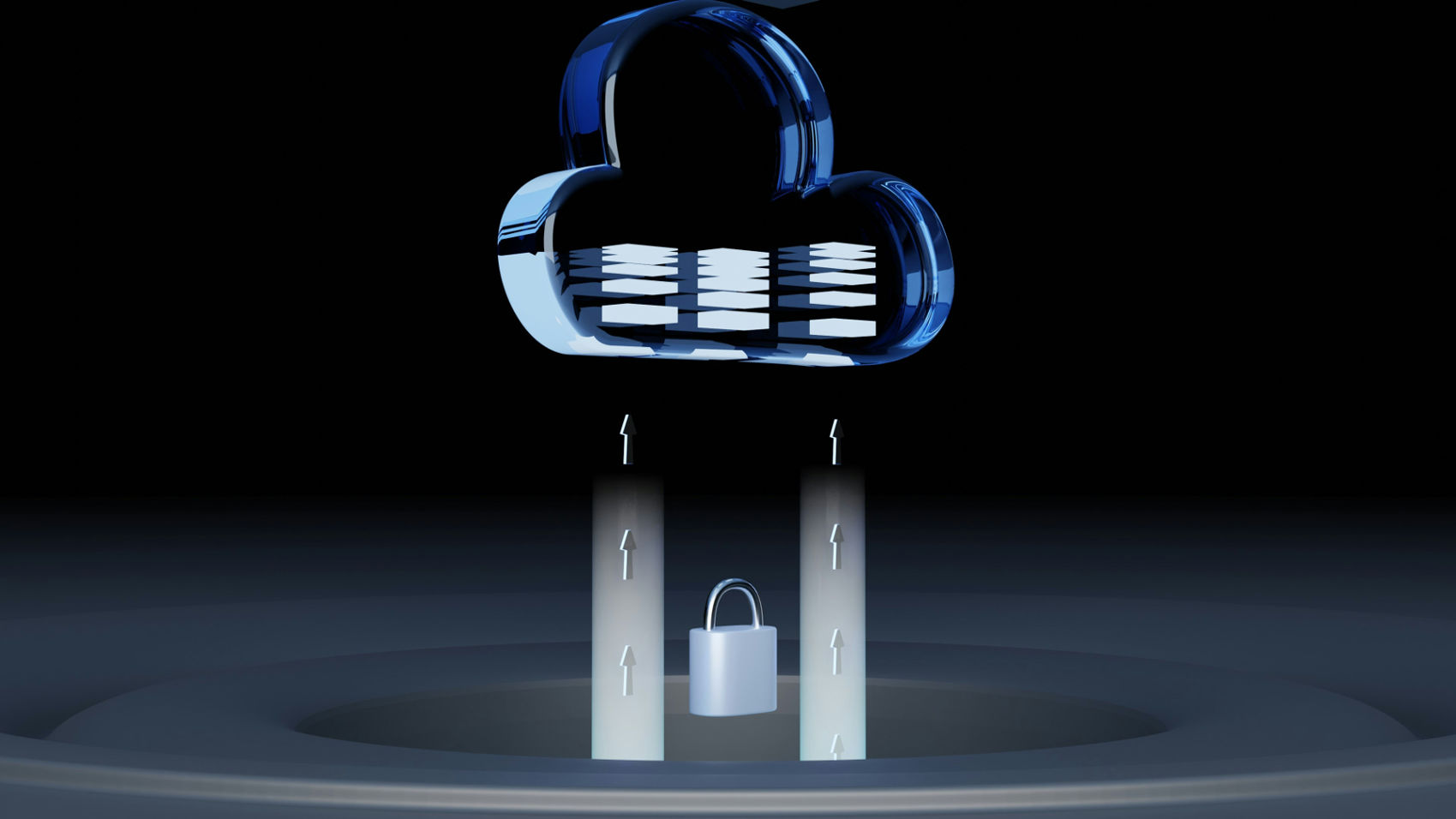 Security Updates
Security UpdatesA Guide to Cloud Network Technology: Benefits and Types
Unlock the potential of cloud network technology for seamless connectivity. Learn and scale solutions that drive business innovation and growth via...
 Security Updates
Security UpdatesAffordable Managed IT Services for Small Businesses
Explore top-managed IT services for small businesses to boost efficiency and security. Get expert insights and practical tips to optimize your IT o...
 Security Updates
Security UpdatesSecure Your Network with Gateway Security Solutions
Explore the essentials of gateway security: learn about its importance for network protection and best practices to safeguard your digital assets e...
 Security Updates
Security UpdatesDisaster Recovery Testing: Ensure Business Continuity
Explore effective disaster recovery testing strategies in this guide to maintain business continuity, prevent data loss, and minimize downtime duri...
 Security Updates
Security UpdatesMaximizing Security: Vulnerability Management Lifecycle
Explore the complete guide to the Vulnerability Management Lifecycle to boost your cyber resilience and secure your business IT infrastructure effe...
 Security Updates
Security UpdatesYour Network with Endpoint Security Management
Explore our comprehensive guide on Endpoint Security Management to understand its importance, how it works, and best practices for robust network s...
 Security Updates
Security UpdatesEnsuring Security Compliance: Tips, Insights & Strategies
Discover the essentials of security compliance, its importance, frameworks, and tools. Learn how to protect data and meet regulatory standards effe...
 Security Updates
Security UpdatesBoost Your Security with Internal Penetration Testing
Dive into internal penetration testing with our in-depth guide. Learn the essentials, techniques, and best practices to fortify your cybersecurity ...
 Security Updates
Security UpdatesEgress vs Ingress: A Guide to Data Traffic Management
Understand Egress vs Ingress in data management. Learn and explore their roles, traffic analysis, risks, and best practices for network and cloud s...
 Security Updates
Security UpdatesPrevent Credential Harvesting to Protect Your Precious Data
Understand credential harvesting. Learn how it works, common techniques, its impact, and strategies to prevent and mitigate attacks to secure your ...
 Security Updates
Security UpdatesSecure Your Big Data: Top Solutions for Data Security
Protect your valuable data with our robust big data security solutions. Learn about the threats and Safeguard against cyber threats and ensure comp...
 Security Updates
Security UpdatesSecure Your Network with Advanced Management Solutions
Explore the details of comprehensive network security management: Learn key strategies, best practices, and tools to safeguard your digital environ...
 Security Updates
Security UpdatesGuide to On-Path Attacks: Protecting Your Cybersecurity
Learn about on-path attacks in this comprehensive guide, exploring definitions, types, consequences, and key prevention strategies to safeguard you...
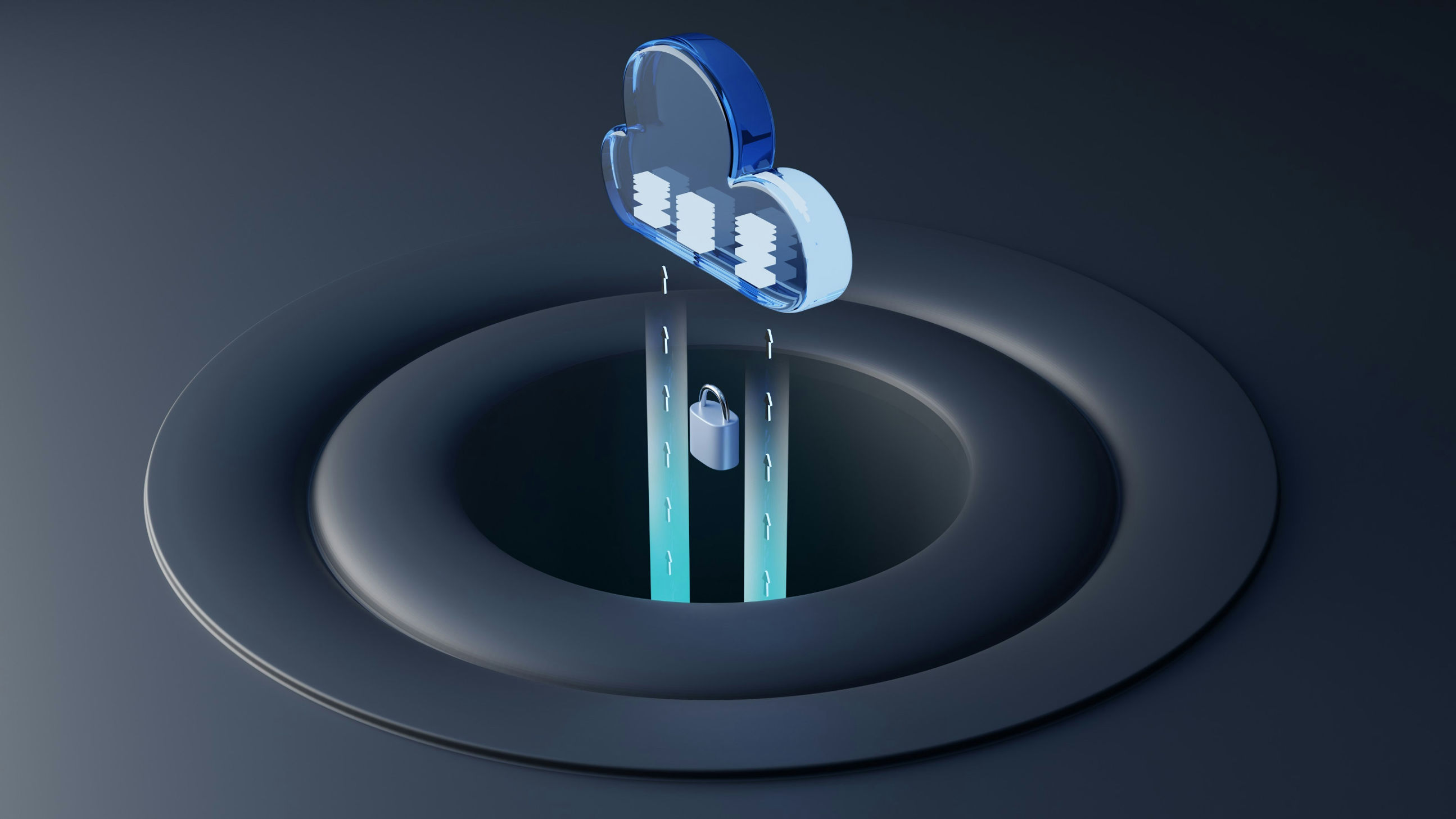 Security Updates
Security UpdatesExploring Managed Cloud Services: A Comprehensive Guide
Dive into the Managed Cloud Services with our in-depth guide. Explore benefits, types, and best practices to enhance your business's cloud strategy...
 Security Updates
Security UpdatesComprehensive Guide to Ubiquitous Computing: Impact & Future
Explore the details of ubiquitous computing, from its core concepts and layers to its societal impact, key technologies, applications, and future p...
 Security Updates
Security UpdatesClone Phishing Explained: Detection and Prevention Guide
Discover how clone phishing works and its impact. Learn effective strategies to identify, prevent, and respond to these sophisticated email threats...
 Security Updates
Security UpdatesHow to Secure Your Business with Cyber Security Insurance
Explore the essentials of Cyber Security Insurance, covering its importance, types of coverage, benefits, and considerations for businesses in the ...
 Security Updates
Security UpdatesEfficient Data Spooling Solutions For Streamlined Operation
Learn How To Efficiently Manage And Store Your Data With Our Reliable Data Spooling Services. Keep Your Information Organized And Accessible With T...
 Security Updates
Security UpdatesMaximizing Compliance & Risk Management: Expert Strategies
Learn how to ensure business success with effective compliance and risk management strategies. Explore definitions, differences, frameworks, and ch...
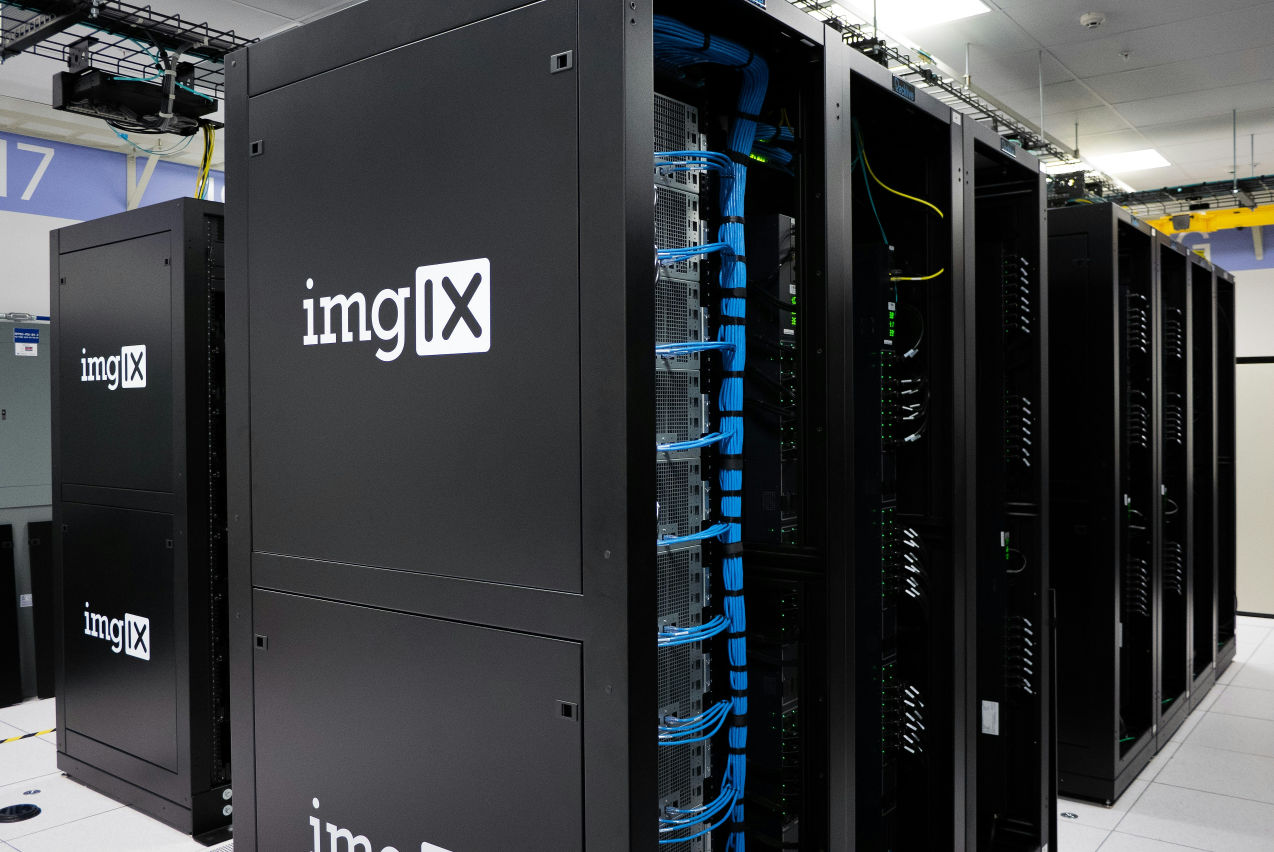 Security Updates
Security UpdatesUnderstanding MDF vs IDF: Key Differences & Benefits
Explore the crucial differences and examples between MDF and IDF in networking, understanding their roles, functions, and impact on network infrast...
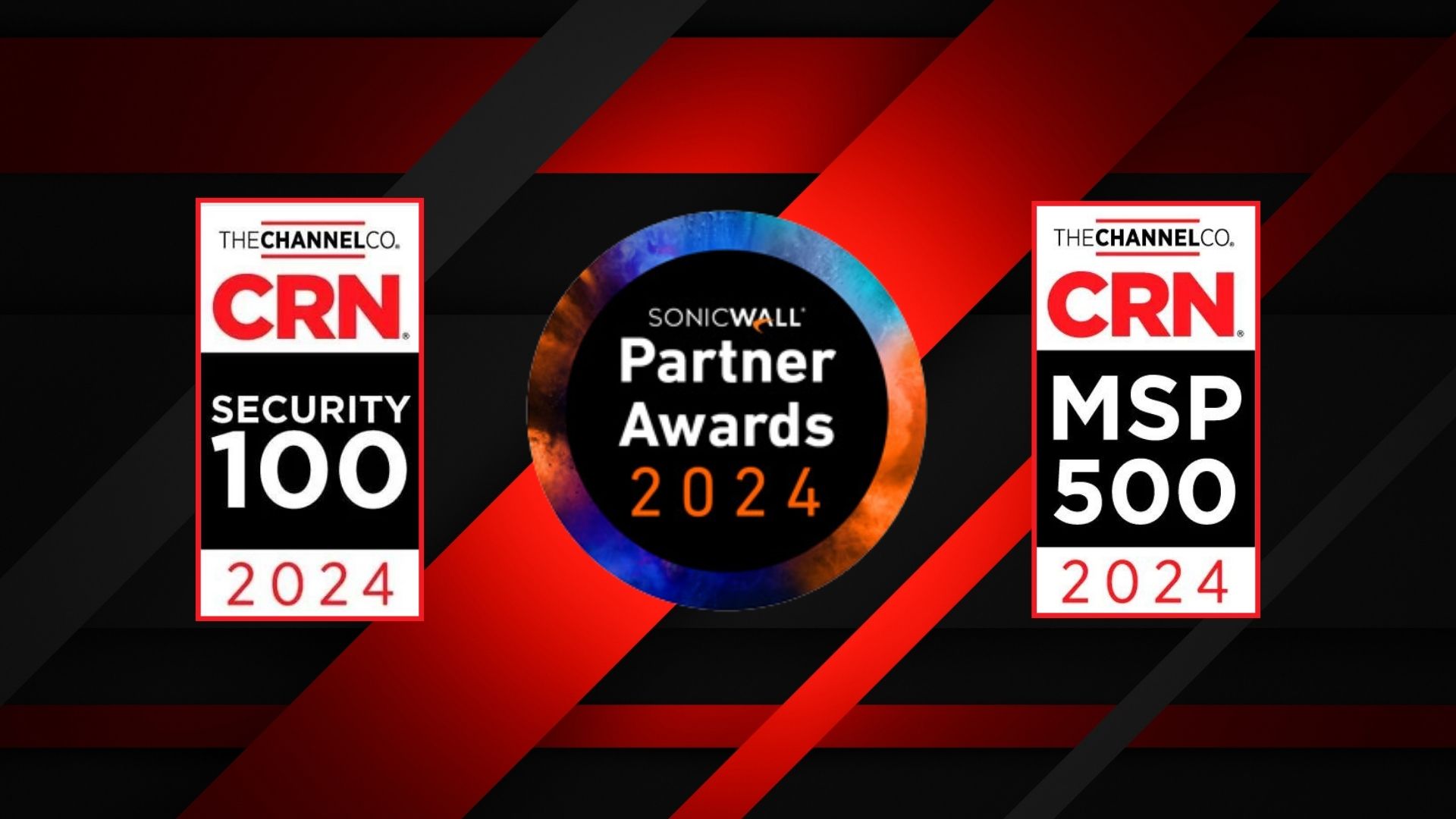 Security Updates
Security UpdatesRedZone Wins CRN's Top Security 100 & MSP 500 Awards 2024
RedZone Technologies earns CRN's Security 100 & MSP 500 Awards, affirming its leadership and innovative approach in the cybersecurity and IT manage...
 Security Updates
Security UpdatesJames Crifasi Speaks on Cybersecurity at Tech Conference
Join James Crifasi, CTO & COO of RedZone Technologies, at the Tech Conference as he explores cybersecurity's role in driving business growth and ad...
 Security Updates
Security UpdatesRedZone's James Crifasi Wins SonicWall's Technical Hero Award
CTO James Crifasi of RedZone Technologies earns SonicWall's Technical Hero of the Year, exemplifying unparalleled dedication to cybersecurity and I...
 Security Updates
Security UpdatesHow to Encrypt Email in Outlook
Learn how to encrypt email in Outlook with our step-by-step guide. Secure your messages using S/MIME, Office 365 Encryption OME, and add-ins for pr...
 Security Updates
Security UpdatesWhat Is Security Monitoring? Importance and Tools
Explore the importance of security monitoring, its key roles, types, and how it protects organizations against threats, ensuring compliance and pro...
 Security Updates
Security UpdatesServer 2012 R2 End of Life: Implications and Next Steps
Learn about Server 2012 R2 end of life: Understand its impact, key dates, risks post-EOL, and explore upgrade options and migration strategies for ...
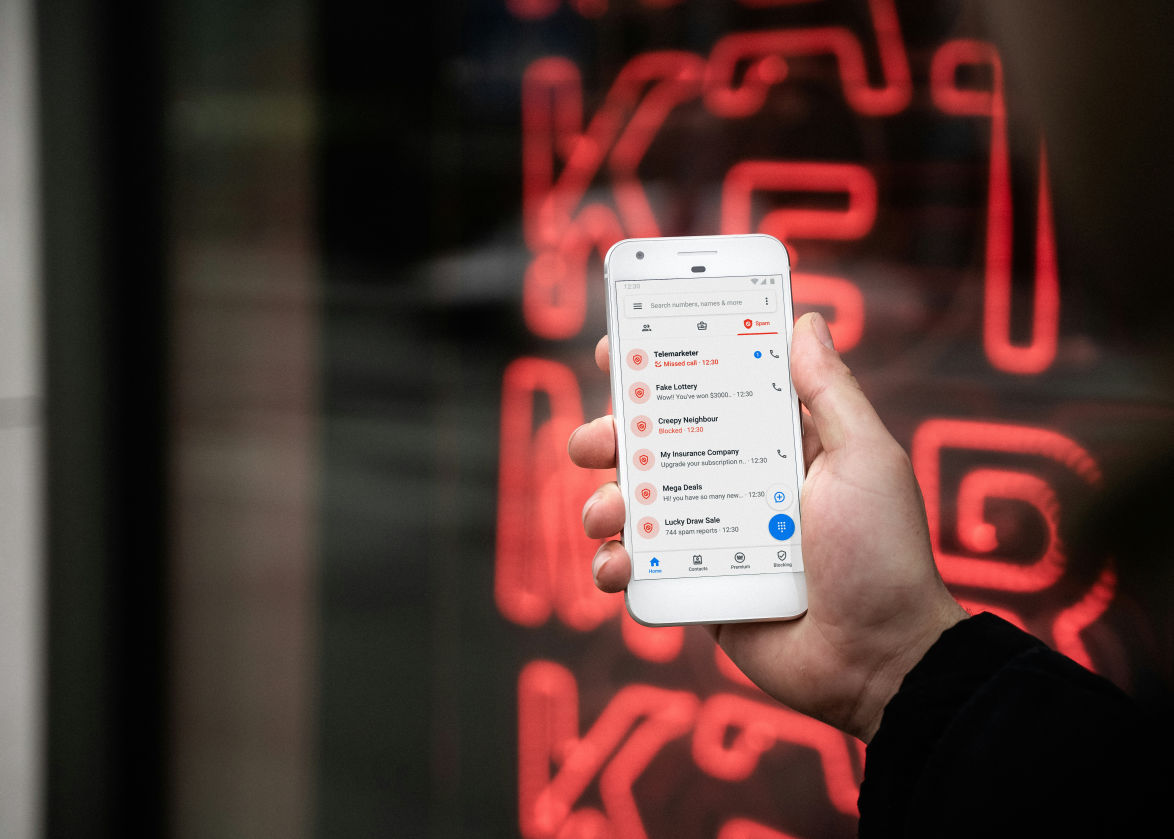 Security Updates
Security UpdatesProtect Personal Data: Smishing and Phishing Prevention
Know how to identify and protect against smishing and phishing attacks. Learn the techniques, types, and preventive measures for personal and busin...
 Security Updates
Security UpdatesSmurf Attack Guide: Prevention & Detection Strategies
Explore prevention & recovery from Smurf Attacks: Understand DDoS defense, detection signs, and secure network practices in our detailed cybersecur...
 Security Updates
Security UpdatesWhat is a Bad USB Attack, and How Do You Prevent It?
Learn about Bad USB attacks, their various forms, and strategies for safeguarding devices. Learn how to mitigate risks with effective prevention te...
 Security Updates
Security UpdatesKey Differences Between DOS Attack vs DDOS Attack
Explore the key differences between DDoS vs DoS attacks, their types, impacts, and prevention strategies in our comprehensive guide to enhance cybe...
 Security Updates
Security UpdatesUnderstanding the Impact of a Ping of Death Attack
Explore the ins and outs of Ping of Death attacks. Understand how they work, their impact on networks, and strategies to prevent them to keep your ...
 Security Updates
Security UpdatesThe Power of the Human Firewall: Your First Line of Defense
Discover the critical role of the human firewall in cybersecurity, combining employee vigilance with technology to protect against cyber threats ef...
 Security Updates
Security UpdatesStateful Firewall vs. Stateless Firewalls: What's the Difference?
Learn the key differences between stateful and stateless firewalls and how they protect your network. Discover the right choice for your security n...
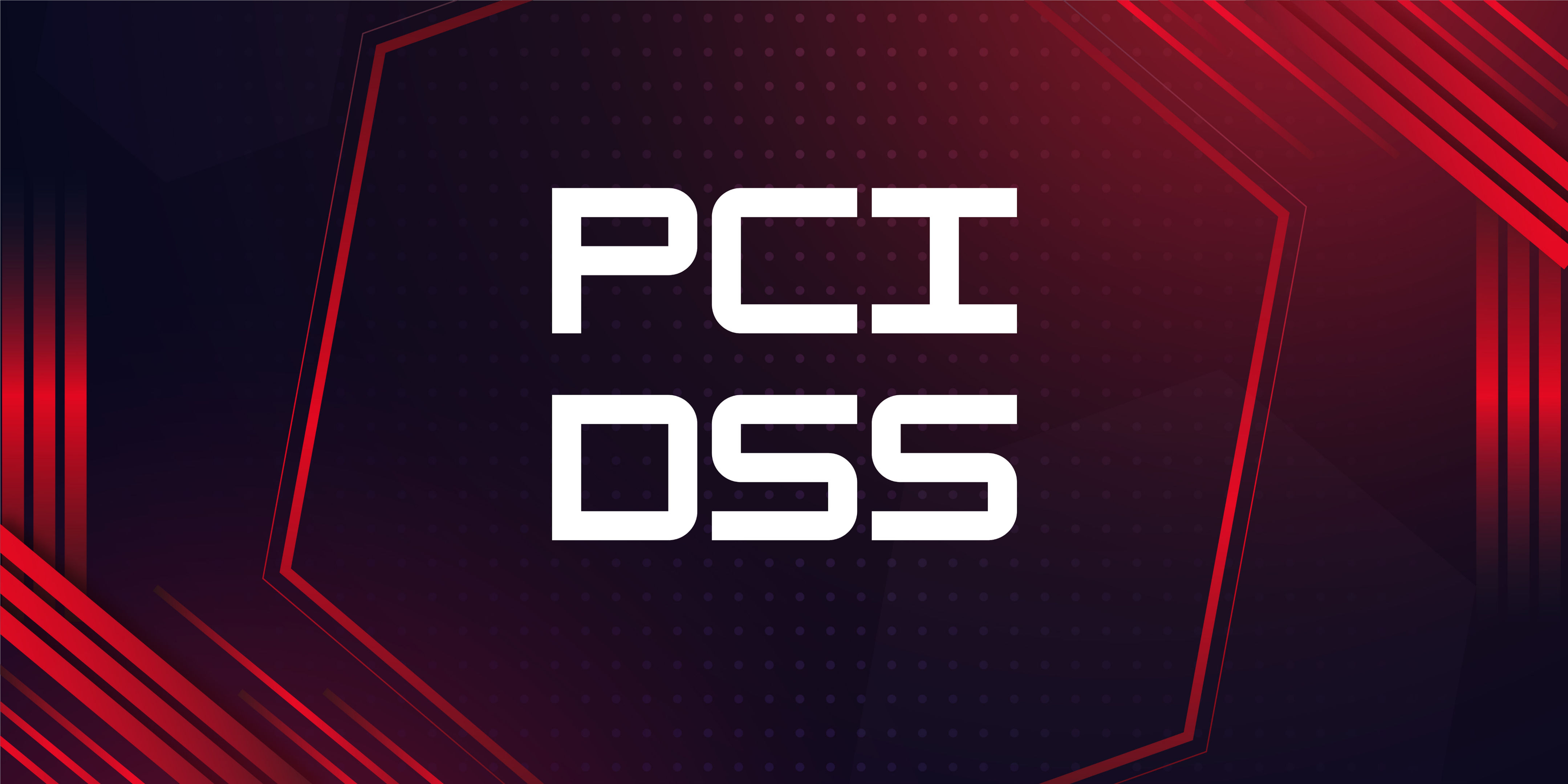 Security Updates
Security UpdatesUnderstanding the 4 Levels of PCI Compliance
Explore PCI DSS Compliance with RedZone: Key steps to protect card data and ensure secure transactions. Learn about compliance levels and tips for ...
 Security Updates
Security UpdatesWhat Is a Security Breach and How to Prevent Them
Learn how to effectively guard your business against security breaches with RedZone Technologies. Discover simple steps to keep your data safe and ...
 Security Updates
Security UpdatesUnderstanding Tailgating in Cybersecurity
Understand tailgating attacks in cybersecurity: what they are, how they work, and effective strategies for prevention to keep your business...
 Security Updates
Security UpdatesWhat is a Managed Service Provider and Its Benefits
Explore the role of Managed Service Providers (MSPs) in enhancing IT efficiency and cybersecurity for businesses, covering benefits, servi...
 Security Updates
Security UpdatesBreach Prevention: 5 Best Practices to Protect Your Data
Learn about data breaches: what they are, their impact, and how to prevent them. Explore best practices for securing your business against cyber th...






